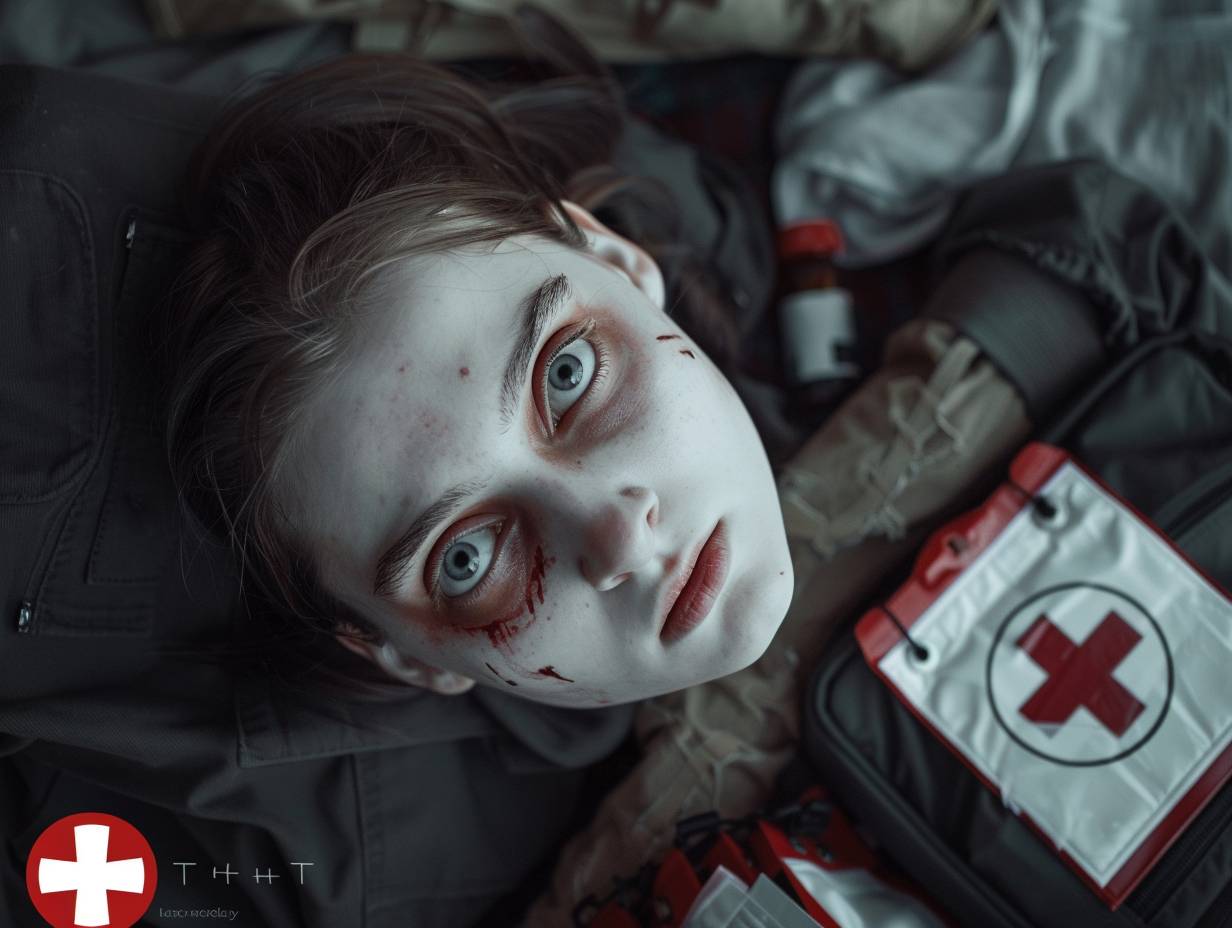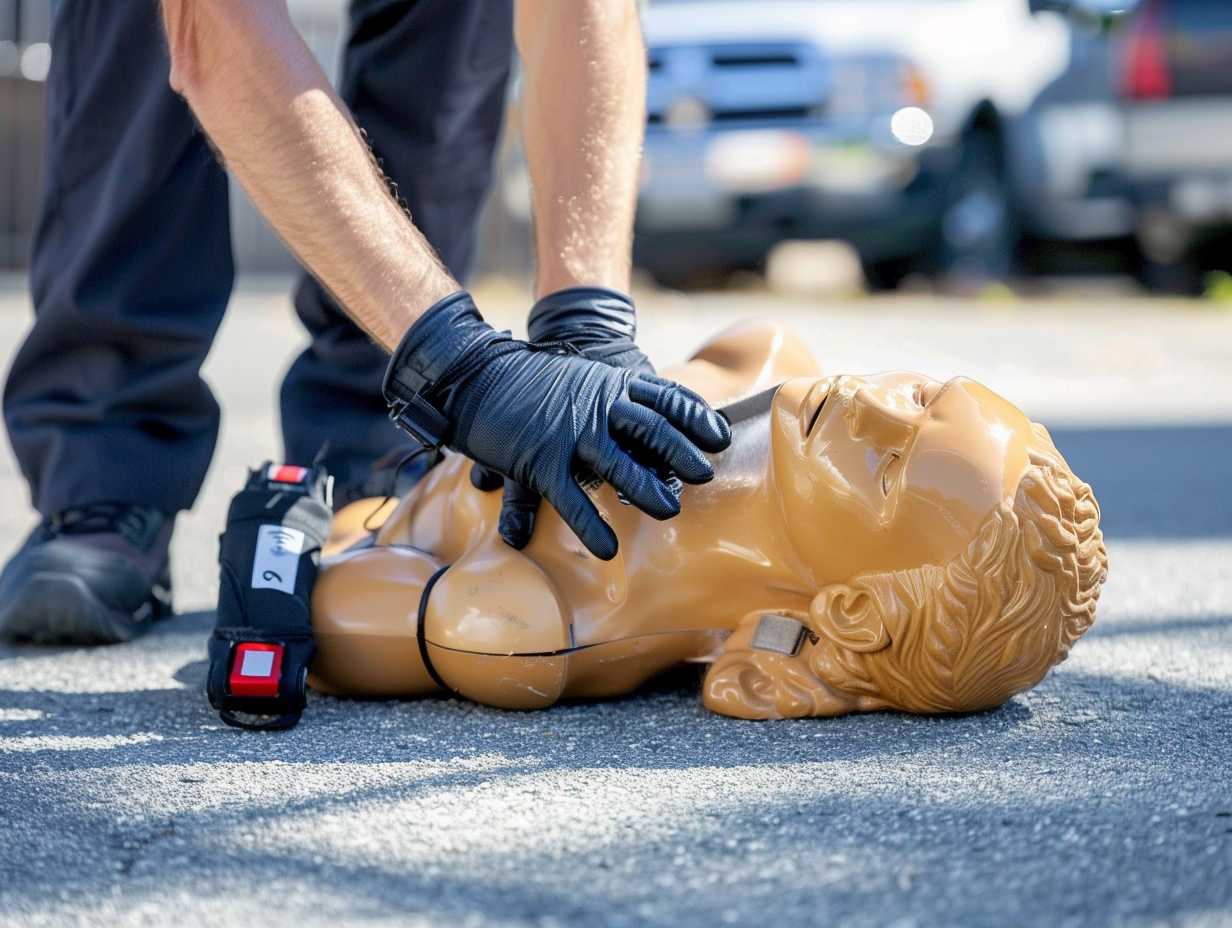
First-Aid Essentials and Skills

You might think of first-aid as a skillset reserved for medical professionals, but in reality, it’s an essential set of abilities that can be lifesaving in unexpected situations. From tending to wounds to recognizing signs of distress, having a grasp of first-aid essentials can make all the difference when faced with emergencies. Whether it’s a minor injury or a more serious incident, being equipped with these skills can empower you to respond effectively and possibly even save a life. So, are you ready to take the first step towards being prepared for the unexpected?
Key Takeaways
- CPR and bandaging skills are essential for controlling bleeding and maintaining blood circulation.
- Recognizing signs of shock and acting promptly can prevent organ damage.
- Choking situations require quick assessment and proper Heimlich maneuver execution.
- Knowing CPR and AED basics is crucial for responding to sudden cardiac arrests effectively.
- First-aid training empowers individuals to provide immediate assistance confidently in emergencies.
Importance of First-Aid Training
If you want to be prepared for emergencies, undergoing first-aid training is essential. By learning first-aid techniques, you equip yourself with the knowledge and skills needed to provide immediate assistance in critical situations.
Training teaches you how to assess injuries, perform CPR, control bleeding, and respond to various medical emergencies effectively. Additionally, having this training can make a significant difference in saving a life during emergencies. It empowers you to stay calm, take quick action, and potentially prevent a situation from worsening.
Whether at home, work, or in public, the ability to administer first aid can be invaluable. So, consider enrolling in a first-aid course to be better equipped to handle unexpected crises.
Basic First-Aid Techniques
Learn essential basic first-aid techniques to confidently respond to emergencies and provide immediate assistance when needed.
Here are three key techniques to remember:
-
CPR (Cardiopulmonary Resuscitation): Perform chest compressions and rescue breaths to maintain blood circulation and oxygen flow in someone who’s unconscious and not breathing.
-
Bandaging Wounds: Clean the wound with antiseptic, apply a sterile dressing, and secure it with a bandage to control bleeding and prevent infection.
-
Treating Burns: Cool the burn with running water, cover it with a clean cloth, and seek medical help for severe burns to minimize tissue damage.
Recognizing Signs of Shock

After mastering basic first-aid techniques, it’s vital to be able to recognize signs of shock in emergency situations. Shock is a critical condition where the body’s organs aren’t getting enough blood flow.
Common signs of shock include rapid breathing, rapid pulse, pale skin, and confusion. You may also notice cool and clammy skin, weakness, or dizziness. In severe cases, the person may lose consciousness.
It’s essential to act quickly if you suspect someone is in shock. Call emergency services immediately and help the person lie down, elevate their legs slightly, and cover them with a blanket to keep them warm.
Choking and Heimlich Maneuver
When someone is choking, prompt action is essential to dislodge the blockage and restore normal breathing through the Heimlich Maneuver. To perform this life-saving technique properly, follow these steps:
-
Assess the Situation: Quickly determine if the person is truly choking by asking them if they can speak or cough.
-
Stand Behind the Person: Position yourself slightly to the side and wrap your arms around their waist.
-
Perform Abdominal Thrusts: Make a fist with one hand and place it slightly above the person’s navel. Grab your fist with the other hand and press into their abdomen with a quick upward thrust. Repeat until the object is expelled and normal breathing resumes.
CPR and AED Basics

In an emergency situation, knowing how to perform CPR and operate an AED can make a critical difference in saving a life.
CPR, or cardiopulmonary resuscitation, involves chest compressions and rescue breaths to maintain blood circulation and oxygenation when someone’s heart or breathing has stopped. To perform CPR, remember to call emergency services first, then push hard and fast in the center of the chest to the beat of ‘Staying Alive’ by the Bee Gees.
AED, or automated external defibrillator, is a portable device that can analyze the heart’s rhythm and deliver a shock if needed. AEDs are user-friendly with voice prompts to guide you through the process, making it easier to assist someone experiencing sudden cardiac arrest.
Treating Burns and Wounds
Knowing how to properly treat burns and wounds is essential in providing immediate care during emergencies. When faced with such situations, follow these steps:
- For Burns:
- Cool the burn with running water for at least 10 minutes.
- Remove any constricting items near the burn.
- Cover the burn with a sterile, non-adhesive dressing.
- For Wounds:
- Clean the wound with mild soap and water.
- Apply an antibiotic ointment to prevent infection.
- Cover the wound with a sterile bandage or dressing.
- Monitor:
- Keep an eye on the burn or wound for signs of infection.
- Seek medical attention if the injury is severe or shows signs of infection.
- Update tetanus vaccinations if necessary.
Dealing With Fractures and Sprains

To effectively address fractures and sprains, remember to apply the RICE method: rest, ice, compression, and elevation.
If someone sustains a fracture, help them stay still and avoid moving the injured area. Apply a cold pack wrapped in a cloth to reduce swelling and pain. Use a bandage or elastic wrap to compress the area gently, making sure it’s not too tight. Elevate the injured limb above heart level to minimize swelling.
It’s essential to seek medical attention promptly for fractures to guarantee proper treatment and healing. For sprains, follow the same RICE method initially, but if the pain or swelling persists, consult a healthcare professional to rule out any severe injuries.
First-Aid Kit Essentials
When preparing your first-aid kit, remember to include essential items for addressing various injuries and emergencies. Here are three must-have items to include in your kit:
-
Adhesive Bandages: These are handy for minor cuts, scrapes, and blisters. Make sure to have a variety of sizes to cover different wound types.
-
Antiseptic Wipes: Use these wipes to clean wounds before applying bandages to prevent infection.
-
Sterile Gauze Pads: Ideal for larger wounds that need more protection and absorption than adhesive bandages can provide. They help stop bleeding and protect the injury while it heals.
Ensuring your first-aid kit is stocked with these essentials will help you be prepared for common injuries and emergencies.
Frequently Asked Questions
Can I Use First-Aid Skills on Pets or Animals?
Yes, you can use first-aid skills on pets or animals. It’s important to know how to apply basic techniques to help them in emergency situations. Learning how to assist animals can make a difference in critical moments.
What Should I Do if a Person Refuses Help?
If a person refuses help, respect their decision, but calmly explain the potential risks and benefits of accepting assistance. Offer to stay nearby in case they change their mind. Always prioritize their autonomy and well-being.
How Can I Stay Calm During a Medical Emergency?
When faced with a medical emergency, take deep breaths, repeat a calming mantra, and focus on the steps you need to take. Remind yourself that staying calm is key to making sound decisions and helping effectively.
Is It Safe to Perform CPR on a Pregnant Woman?
If you encounter a pregnant woman needing CPR, it is essential to act promptly. Call for help, tilt her on her left side to avoid pressure on the vena cava, and perform chest compressions with care.
What Are the Legal Implications of Administering First Aid?
Administering first aid without proper training can result in legal consequences. Good Samaritan laws protect those offering aid in good faith. However, negligence or improper care may lead to liability. Always act within your scope of training.
Conclusion
To sum up, remember that when it comes to first-aid essentials and skills, it’s better to have them and not need them than to need them and not have them.
So, stay prepared, stay informed, and remember: ‘An ounce of prevention is worth a pound of cure.‘
Keep practicing and honing your first-aid skills – you never know when they may come in handy!
Disclaimer: Some information is provided through AI. Users should always conduct their own research and consult with qualified professionals before making any decisions.Affiliate information declaration: We may earn revenue from the products referred on this page and participate in affiliate programs.


